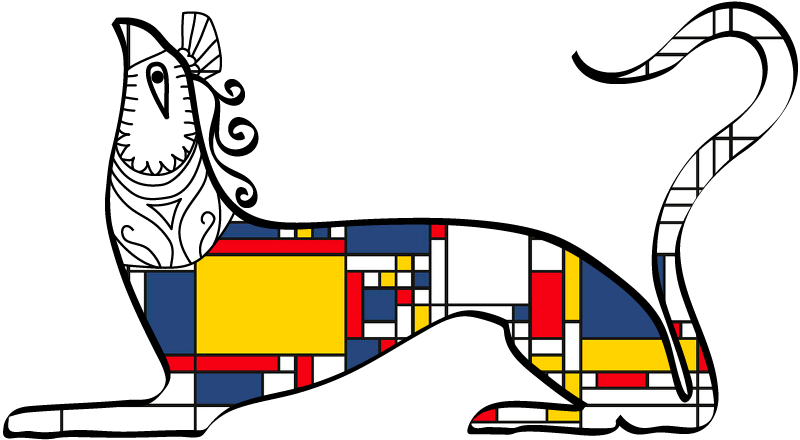Geometric and Archaic Sanctuaries in the Northern Peloponnese
On 5-6 November 2020 an online symposium entitled Interpreting the Pottery Record from Geometric and Archaic Sanctuaries in the Northern Peloponnese: Cult and Votive Practices, Provenance, and Production Methods will be hosted in Vienna (CET) by the Austrian Academy of Sciences. Registration is available at https://oeaw-ac-at.zoom.us/webinar/register/WN_ZMldFs7CQ7WoRrBdWdSyQw; further information is available at https://www.oeaw.ac.at/en/oeai/public-relations/events/event-detail/interpreting-the-pottery-record-from-geometric-and-archaic-sanctuaries-in-the-northern-peloponnese-1. Papers of interest to Nestor readers will include:
W. Gauß and F. Ruppenstein, “New research at the Geometric and Archaic sanctuary at the Acropolis of Aigeira”
M. Petropoulos and K. Aktypi, “Artemis Aontia: a Geometric sanctuary in the heart of Achaea and its relations with other regions”
E.-I. Kolia, “Presentation of the stratigraphy of the early Iron Age sanctuary of Poseidon Heliconius in Achaea”
A. Gadolou, “Interpreting the pottery record from the early Iron Age sanctuary of Poseidon Heliconius of Ancient Helike in Achaea: cult and votive practices before the construction of the apsidal temple”
G. Alexopoulou, “‘Traced via their gifts’. Cults in the ancient region of Kalavryta as suggested by votive offerings”
G. Ladstätter and N. Voß, “Ancient Lousoi in the Geometric and the early Archaic period: topography, architecture and stratigraphy”
N. Voß, “Cult and votive practices at Geometric and Archaic Lousoi: analysing ceramic assemblages from the sanctuary of Artemis Hemera and from the town centre”
C. Morgan, “Thirty years on: progress and prospects in the study of ceramic assemblages from Greek sanctuaries”
P. Fragnoli, “Compositional and technological characterization of Geometric and Archaic pottery from the sanctuary of Artemis Hemera in Lousoi”
V. Vlachou, “Pottery and the Hyakinthia festival. Interpreting the pottery deposits from the Spartan Amyklaion”
Empire and excavation
On 6-7 November 2020 a conference entitled Empire and excavation: critical perspectives on archaeology in British-period Cyprus, 1878-1960 will be held online, hosted in Nicosia, Cyprus (EET) by the British Museum and Cyprus American Archaeological Research Institute (CAARI). Registration is available at https://docs.google.com/forms/d/e/1FAIpQLSc-ebvBdFEKBgJkIHWoy0gvTBC8LArtgI81F3pRHjVmSMYvNA/viewform; further information is available at http://caari.org/programs/. Papers of interest to Nestor readers will include:
M. Given, “Surveillance, Survey and Local Knowledge: Landscape relations in late 19th-century Cypriot archaeology”
S. Diakou, “Law and archaeology in British-period Cyprus: the case of Lapithos”
P. Nikolaou, “The Ancient Cyprus Collection at the British Museum: retracing stories of travelling antiquities, knowledge and empire”
J. Desplat, “Excavating in the Empire — and in the Archives. Archaeology in Cyprus in British Governmental Records”
S. Schmid, “Was there an official German interest in the archaeology of Cyprus between 1878 and 1914?”
S. Irving, “Archaeological entanglements: Palestinian refugee archaeologists in Cyprus, Libya and Jordan”
P. Theofanous, M. Volikou, and D. Pilides, “Diving into the Past: Archival Research Results of the Cyprus Coastal Assessment Project and the History of the First Underwater Archaeological Explorations in Cyprus”
B. Knapp, “Prehistoric Archaeology in the Republic of Cyprus: The First Sixty Years”
R. Marshall, “Archaeology in early twentieth-century Cyprus: Imperialism, Hellenism, and the Eteocypriots”
J. Smith, “Excavation and Archaeologists at Marion in the British Colonial Period”
MARE
On 20-21 November 2020 a conference for young researchers entitled Maritime Archaeology Research Exchange (MARE) will be held in Hamburg. Further information is available at https://mareconferencehamburg.wordpress.com/. Papers of interest to Nestor readers will include:
W. Held, “The coasts of the Karian Chersonesos from the Bronze Age to the Roman Imperioa period. First results of a new Turkish-German cooperation project”
N. Köknar, “Late Bronze Age Burials in the Western Anatolian Coast and Sea Trade and Cultural Connections with Mycenaeans”
E. Loizou, “The harboursides as key-sites for understanding the networks in the Aegean Prehistory”
Potter’s Wheel
On 24-27 November 2020 a virtual conference entitled Archaeological Approaches to the Study of the Potter’s Wheel will be hosted by the University of Hradec Králové (CEST). Further information is available at https://potterswheelconference2020.wordpress.com/. Papers of interest to Nestor readers will include:
A. Cercone, “Examining Variability in Anatolian Early Bronze Age Hand-Made and Wheel-Made Pottery”
M. Choleva, “The potter’s wheel as cultural practice in the prehistoric Aegean”
A. Balitsari, “Different shades of Gray Minyan: dissecting an ‘iconic’ ceramic class of Middle Bronze Age, mainland Greece”
S. Prillwitz, “Is there only one type of potter’s wheel in Late Bronze Age Greece?”
X. Charalambidou, “Wheel rotation on Early Iron Age and Archaic Naxian coarse wares: their context and evolution”

